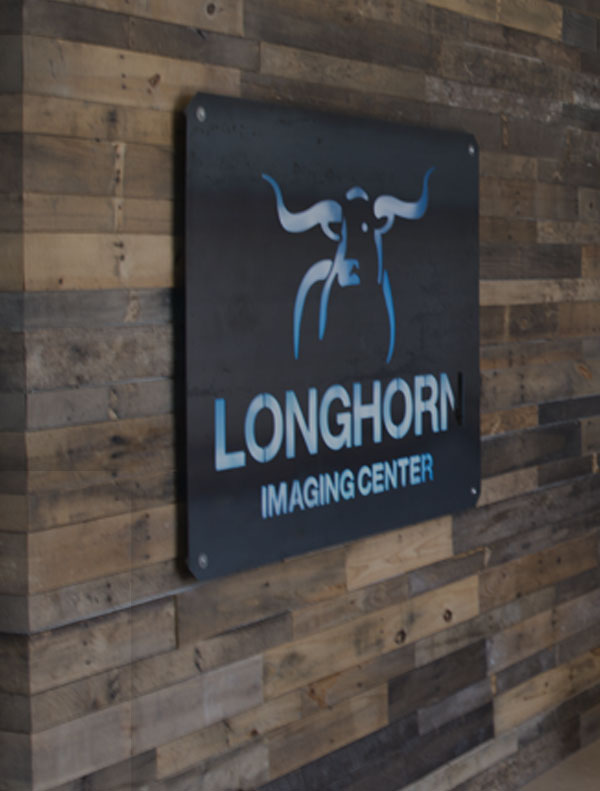Longhorn Imaging Center and Videonystagmography (VNG) for Concussion Protocol
An injury to your head caused by a violent hit to the head or a whiplash-type event may result in a concussion. The most common origins of this type of injury are falls, sports-related injuries, assaults, and motor vehicle accidents.
A concussion is a mild traumatic brain injury (TBI) and is not usually life-threatening. However, it deserves attention because of its possible long-lasting effects if left untreated.
Studies show that many concussion injuries cause damage to your inner ear or vestibular system. Videonystagmography (VNG) uses technology to test your inner ear and vestibular system.
At Longhorn Imaging Center, we take your injuries seriously and offer hope to you for answers about the effects of a concussion. VNG technology is one of the diagnostic services that helps your doctor determine the amount of damage that has been done and enables them to establish the best treatment plan for you.
If your doctor has ordered a VNG for you, contact us today at 512-444-8900 to schedule an appointment.
What is Videonystagmography (VNG)?
A VNG examines nystagmus (involuntary eye movement). Nystagmus happens when your brain receives conflicting messages from your eyes and your inner ears, causing dizziness or balance issues.
The vestibular system is your body’s center of balance control. The system works together with your eyes, sense of touch, and brain to keep your balance stable.
Pre-Injury VNG
A Pre-Injury VNG establishes the absence or presence of any pre-existing inner ear or vestibular system disorders.
People at higher risk for a concussion should obtain a Pre-Injury VNG, which establishes a baseline of your system under normal conditions before any injury.
- Those at higher risk include for a concussion:
- Athletes that participate in high impact sports
Young children and older adults who are at a high risk of falls
Post-Injury VNG
If a pre-injury baseline test exists, the VNG compares the two tests to measure the severity and effects of a concussion.
If no baseline test is available, the VNG will test for post-injury effects to your body.
How Should You Prepare for Your VNG?
- Be well rested for your test.
- Wash your face thoroughly. Do not wear any makeup, false eyelashes, or facial creams or lotions on the day of your test.
- Do not wear contact lenses three days before your test or on the day of your test. You may wear glasses.
- Do not eat food or drink milk 2 to 4 hours before your test.
- If you have diabetes, do not change your diet or diabetic medication routine.
- 48 hours before your test do not take:
- Alcoholic beverages, liquid medication, or mouthwash containing alcohol
- Medications that cause drowsiness
- Medications containing aspirin
- Decongestants or antihistamines
- Anti-seizure, vertigo or nausea medicine
- Diet pills
- Muscle or nerve relaxers
- Illicit drugs
- NOTE: Please consult your doctor regarding stopping your medications. If you are unable to stop any medications per your doctor’s orders, please let us know on the day of your test.
- 48 hours before your VNG, clean your ears twice a day:
- You must clean your ears of ear wax. If there is wax in your ear, your VNG will need to schedule for another day.
- Use any type of over-the-counter ear wax removal kit, following directions on the product package.
- After midnight before your test, you should not drink:
- Coffee, tea, cola, or other caffeinated beverages
- 4 hours before your test:
- Do not use tobacco or nicotine products of any kind, including vaping.
What Happens During a VNG?
The test will take up to two hours to complete.
During a VNG, you will sit in a dark room and will wear special goggles that have an infrared camera inside to record your eye movements.
Main stages of a VNG Test:
- Ocular and Optokinetic testing – Follow moving and nonmoving dots or visual images and track the movements to identify inaccuracies in your ability to follow visual targets, indicating a central or neurological problem or a problem in the pathway connecting your brain to your vestibular system.
- Positional testing – Infrared cameras will record eye movements while your head and body positions change, examining your inner ear system and the condition and flow of fluid in your ear to determine if your symptoms are a result of positional changes due to your ear canal system, brain, or neck.
- Caloric testing – Water or air will be administered into your inner ear (one ear at a time) at different temperatures to monitor your reactions. This test checks the role of your acoustic nerve and evaluates the function of the part of your brain associated with balance.
What Happens After a VNG?
Some people experience mild dizziness after the test, which is why we ask that you have a driver with you.
Once completed, the VNG report will be read and shared with your doctor within 3-5 business days. Your doctor will then discuss the results with you.
Contact Longhorn Imaging Center Today
If you require a baseline VNG or have experienced a concussion, Longhorn Imaging Center is here to help you and your healthcare provider on your journey to the road of recovery.
Don’t wait to get back to where you were before your concussion. Schedule an appointment today at 512-444-8900.



